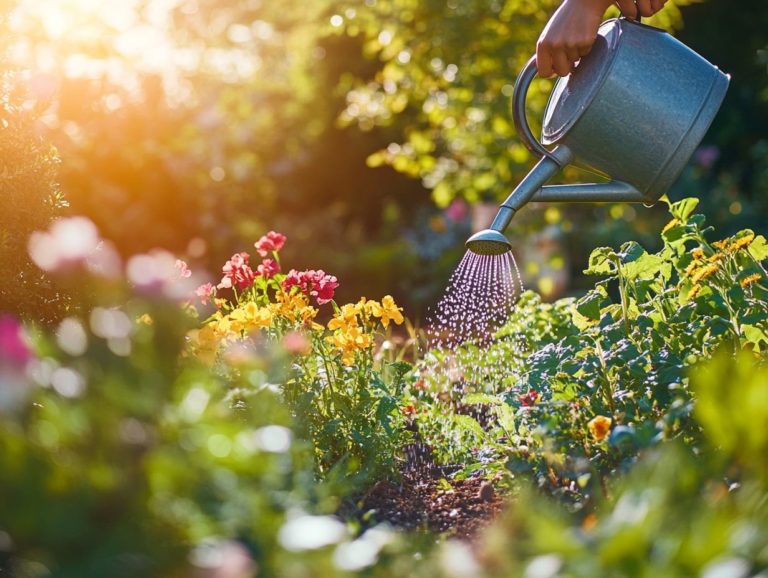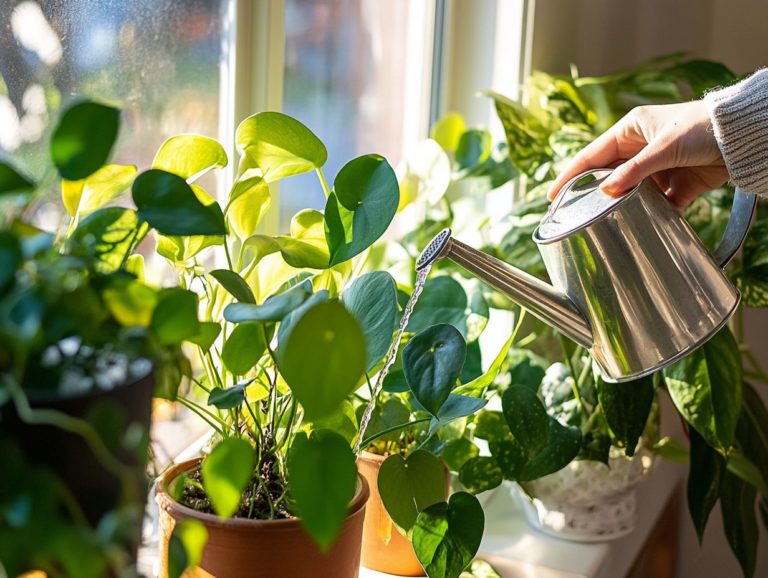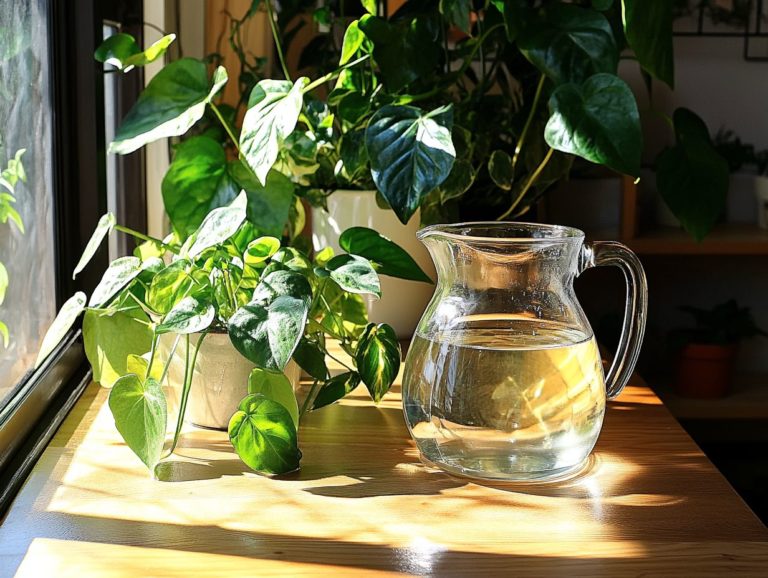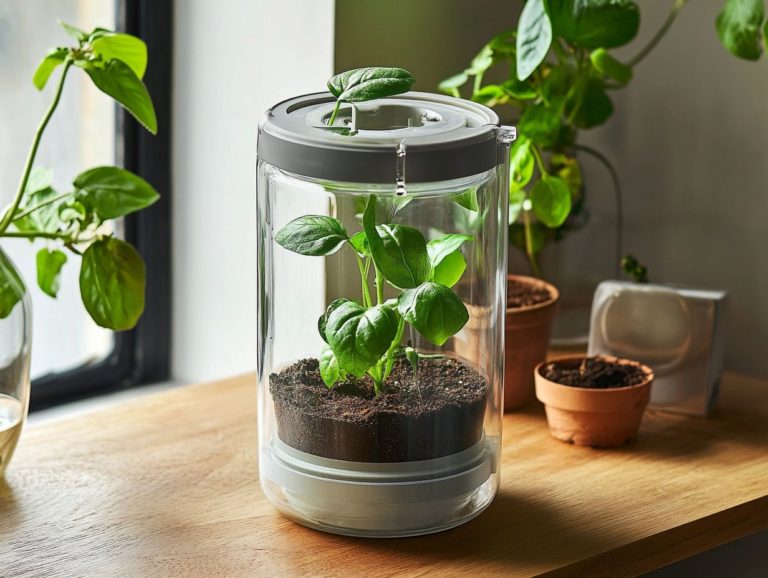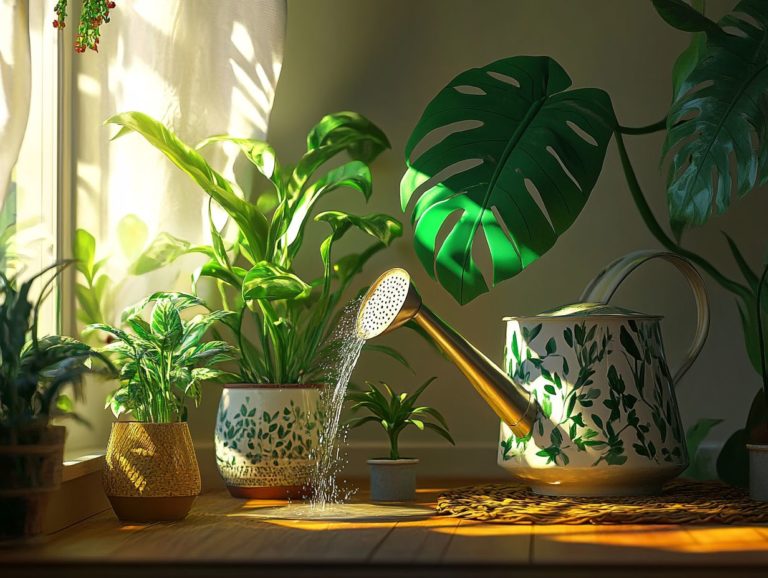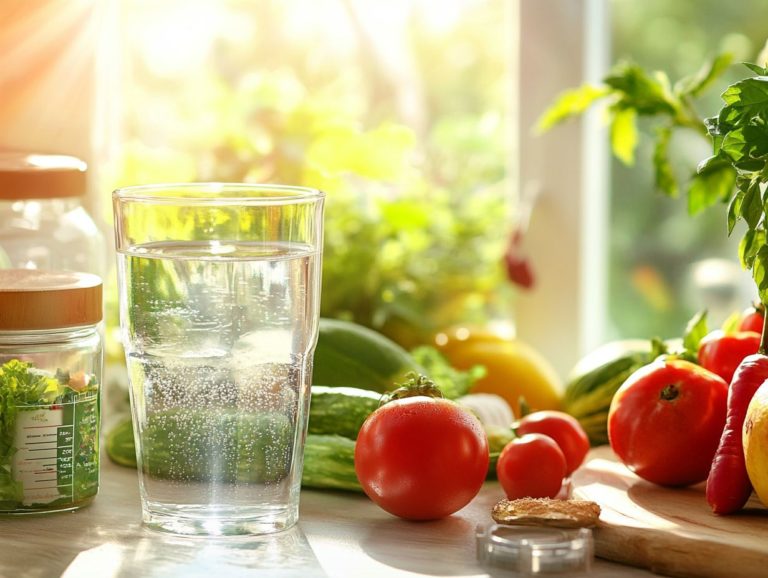Watering in Different Seasons: A Guide
Watering your plants isn’t a one-size-fits-all endeavor; their needs evolve with the changing seasons. Each time of year presents distinct weather conditions that dictate how and when you should engage in effective garden watering.
This guide provides personalized tips for seasonal watering in spring, summer, fall, and winter, ensuring your plants remain healthy and vibrant all year long. From bracing for winter chills to coping with the sweltering summer heat, you ll uncover the best practices for nurturing your garden and keeping it thriving, regardless of the season.
Contents
- Key Takeaways:
- Spring Watering Tips
- Summer Watering Tips
- Fall Watering Tips
- Winter Watering Tips
- Frequently Asked Questions
- What is the best way to water plants during the summer?
- Is it necessary to adjust watering habits in the fall?
- How much should I water my plants during the winter?
- What is the best time of day to water plants in the spring?
- What is the recommended watering schedule for plants in the autumn?
- Should I water my plants differently in different regions or climates?
Key Takeaways:
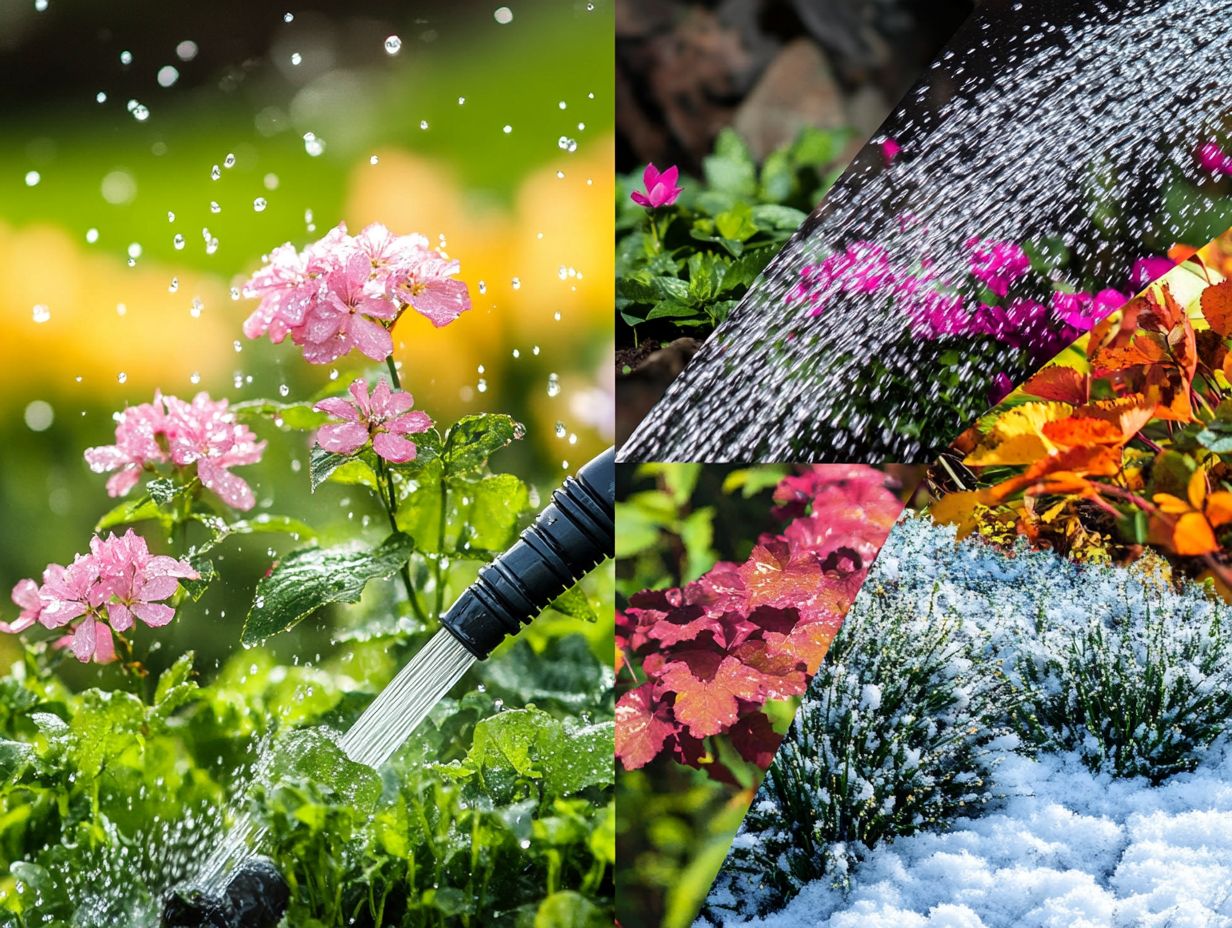
- Water according to the season for optimal plant health.
- In spring, water deeply and less frequently.
- In summer, water in the morning or evening.
- Prepare plants for winter by reducing watering gradually.
- In winter, water sparingly to protect against root damage.
Why Watering Varies by Season
Watering your garden varies with the seasons, influenced by the ever-changing climate and environmental conditions that dictate moisture needs. As spring rolls in and temperatures climb, the demand for watering increases with the emergence of new plants. It is essential to adjust your watering schedule accordingly.
Summer’s intense heat calls for diligent attention to watering frequency to prevent wilting. When fall arrives, plants prepare for winter, prompting a shift in your watering practices. Refer to our seasonal guide on when to water houseplants to ensure you adapt your strategies. In winter, cold weather alters soil types and hydration requirements, making it vital to adjust your watering methods to ensure your garden thrives.
Understanding how each season impacts plant hydration is crucial for maintaining a flourishing garden. In spring, warmer temperatures signal growth, urging you to provide consistent moisture, especially for newly planted seeds and seedlings.
During the sweltering summer months, adopt deeper watering methods while ensuring that drought-resistant plants receive adequate hydration. Consider applying a 2-inch layer of mulch around your plants to help retain precious soil moisture.
As fall approaches, it s time to cut back on watering frequency, as many plants begin to conserve energy and slow their growth. In winter, with the ground potentially freezing, soil moisture levels can be affected. Use techniques such as watering on milder days to support your plants without overwhelming already saturated soil.
Each season presents unique challenges, underscoring the importance of adapting your watering techniques to meet the specific needs of various soil types.
Spring Watering Tips
Spring serves as a crucial moment for garden watering, as fresh plants awaken from their dormant stage and demand sufficient moisture to flourish.
Best Practices for Spring Watering
Implementing best practices for spring watering is crucial for ensuring optimal growth and health of your garden. Understanding how often to water, particularly as temperatures begin to rise, can make a world of difference in maintaining soil moisture and preventing foliage diseases.
Generally, it’s recommended to water your plants deeply about once a week; however, this may vary depending on your specific climate and soil type. Incorporating compost not only enriches the soil but also enhances its ability to retain moisture, allowing your plants to flourish with less frequent watering.
If you’re tending to container plants, you might need to adjust your watering schedule, as pots tend to dry out more quickly than garden beds. Keeping a close watch on soil moisture levels and employing mulch can further assist you in maintaining the perfect balance for your garden’s needs.
Start applying these watering strategies today, and watch your garden thrive through every season!
Summer Watering Tips
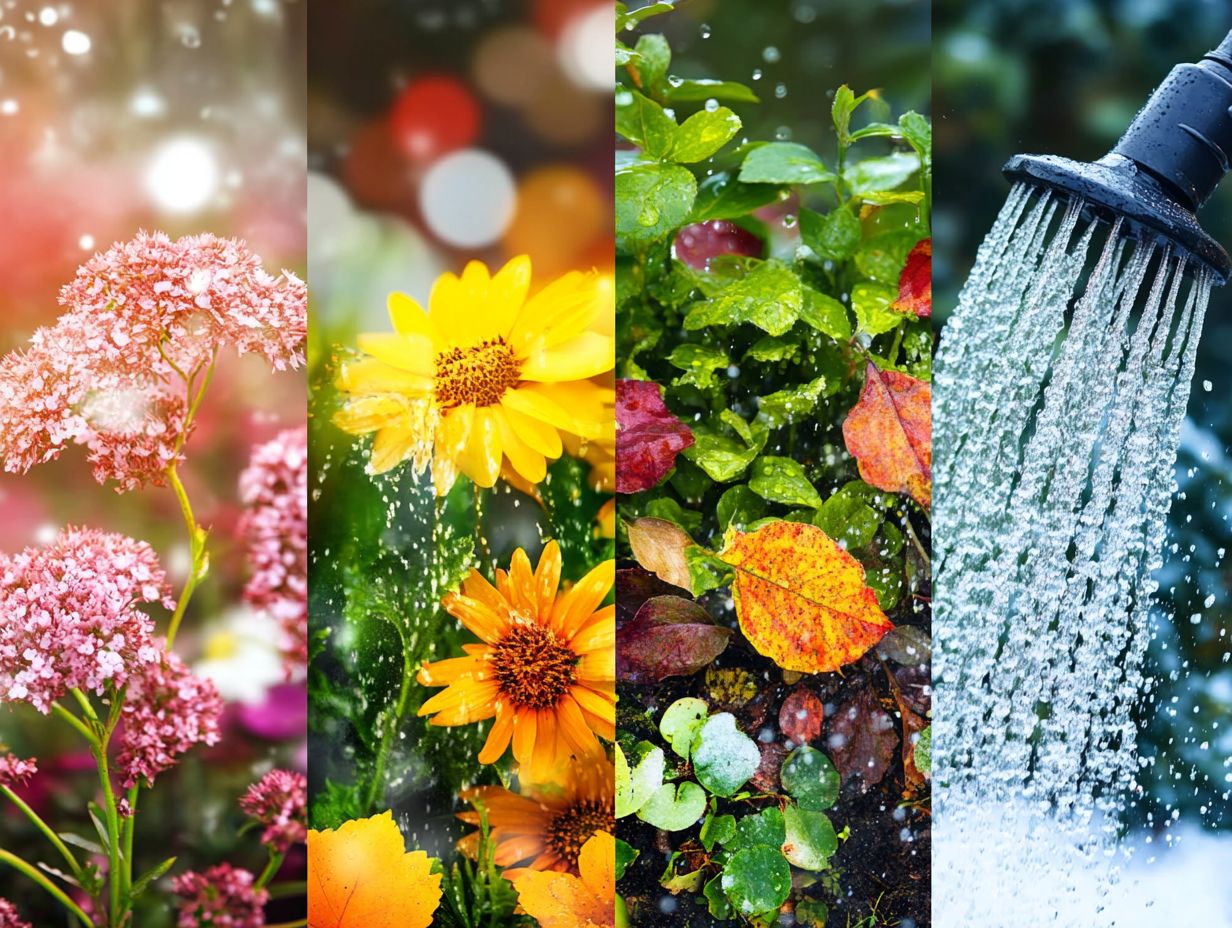
Summer brings distinct challenges when it comes to watering your garden, especially with the looming threat of drought conditions that can profoundly affect the health and hydration of your plants.
How to Keep Plants Hydrated in Summer
Keeping your plants hydrated during the summer months requires a smart method to watering, considering the various soil types and irrigation systems available.
To effectively manage moisture levels, consider techniques like drip irrigation, a watering method that delivers water directly to the roots of your plants. This minimizes evaporation and ensures that every precious drop is utilized. On the other hand, sprinkler systems can be tailored to suit different terrains and specific plant needs, providing coverage and preventing waste.
It s essential to monitor moisture levels regularly and make adjustments based on rainfall and humidity.
Additionally, mulching can significantly enhance soil retention, reducing the frequency of watering. By implementing these methods, you can keep your plants vibrant and healthy throughout the hottest months.
Fall Watering Tips
Fall is a crucial period for watering your garden, as it sets the stage for your plants to withstand the upcoming winter.
This season requires your careful attention to soil moisture levels, ensuring that your plants are well-prepared for the colder months ahead.
Preparing Plants for Winter
Preparing your plants for winter requires a keen understanding of their moisture needs. Adjust your watering practices accordingly. Ensuring that the soil retains adequate moisture supports plant health and fortifies their resilience against harsh winter conditions, preventing dehydration.
Many gardeners underestimate the critical role hydration plays during this transition period. A well-moistened root zone gives the power to plants to endure frost and prevent dehydration. Water thoroughly before the first freeze, and regularly check soil moisture levels to ensure optimal growth during winter. Adding mulch around the base can also help retain moisture while insulating the roots.
As temperatures drop, reduce the frequency of watering to prevent waterlogging, ensuring your plants emerge healthy and vibrant come spring.
Winter Watering Tips
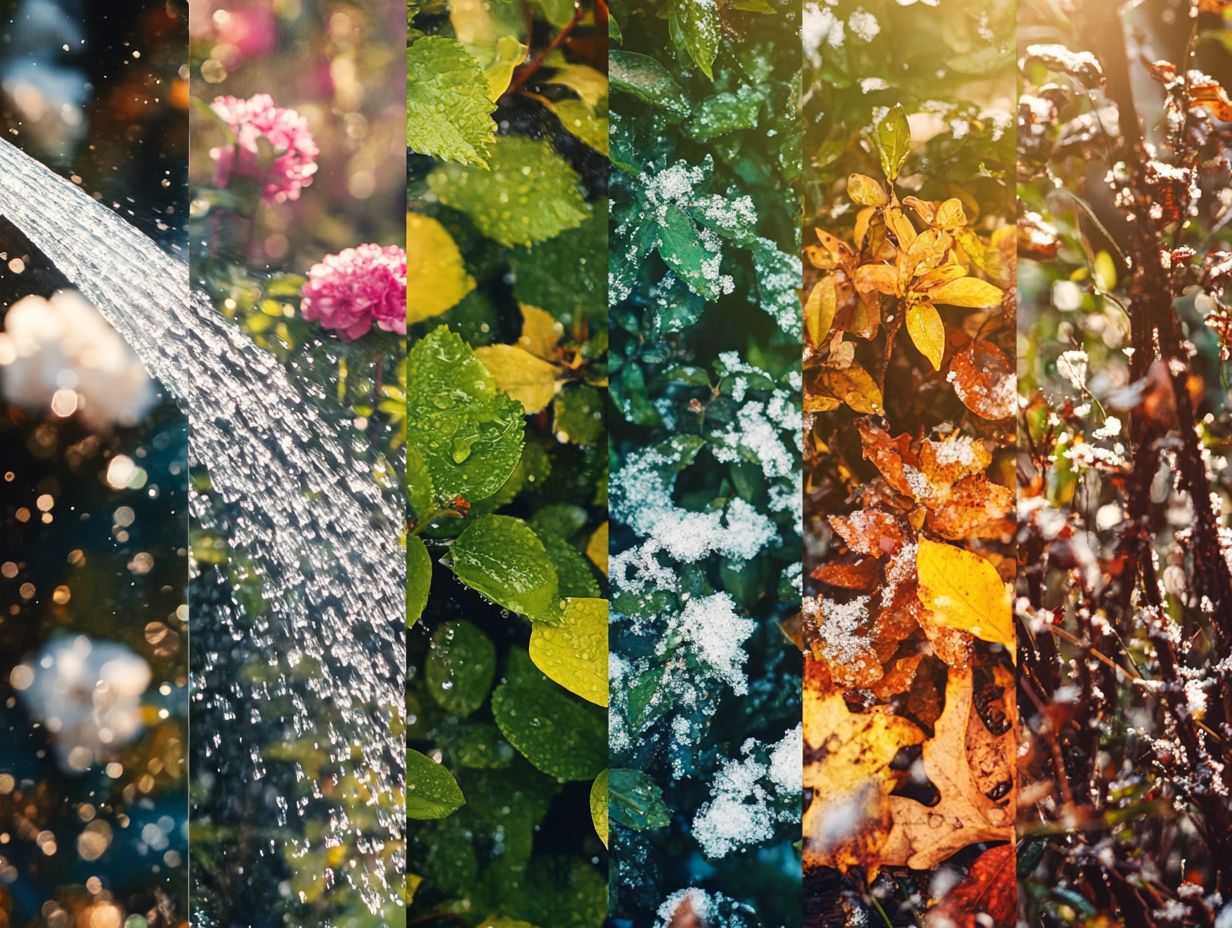
Winter watering tips are essential for preserving plant health during the colder months when soil moisture can rapidly deplete.
How to Water Plants in Cold Weather
Watering your plants in cold weather demands a smart approach to ensure that the delicate root hairs receive the hydration they need without succumbing to freezing temperatures. Deep soaking techniques can be very effective.
You need to be aware of how temperatures change during winter. Aim to water during the warmest parts of the day preferably between late morning and early afternoon when the sun s rays can help temper the chill and reduce the risk of foliage diseases.
Techniques such as deep soaking can prove advantageous, as they allow moisture to penetrate the roots while reducing the likelihood of surface ice.
Additionally, using mulch serves as a protective barrier for the soil and roots, helping to retain warmth and moisture, ultimately supporting the overall health of your plants throughout the harsh winter season.
Frequently Asked Questions
What is the best way to water plants during the summer?
During the summer, it is important to water your plants deeply and less frequently. This encourages deeper root growth and prevents evaporation from the hot sun, ensuring optimal plant hydration.
Is it necessary to adjust watering habits in the fall?

Yes! As the weather cools down, plants require less water. Adjust your watering schedule based on how much water your plants need.
Always check the soil moisture before watering to avoid over-watering.
How much should I water my plants during the winter?
During winter, plants generally need less water. Allow the soil to dry out slightly before watering.
Be mindful of freezing temperatures that could harm the roots!
What is the best time of day to water plants in the spring?
Water your plants in the morning. This allows them to absorb water before the heat of the day.
Watering early also prevents excess moisture, which can lead to fungal growth, supporting the health of new plants.
What is the recommended watering schedule for plants in the autumn?
Water your plants deeply once a week! This is better than watering shallowly and frequently.
This practice promotes healthy root growth, especially for container plants, and helps prepare them for winter.
Should I water my plants differently in different regions or climates?
Absolutely! Adjust your watering techniques based on your specific climate and region.
Factors like humidity, temperature, and rainfall can all affect how much water your plants need.

